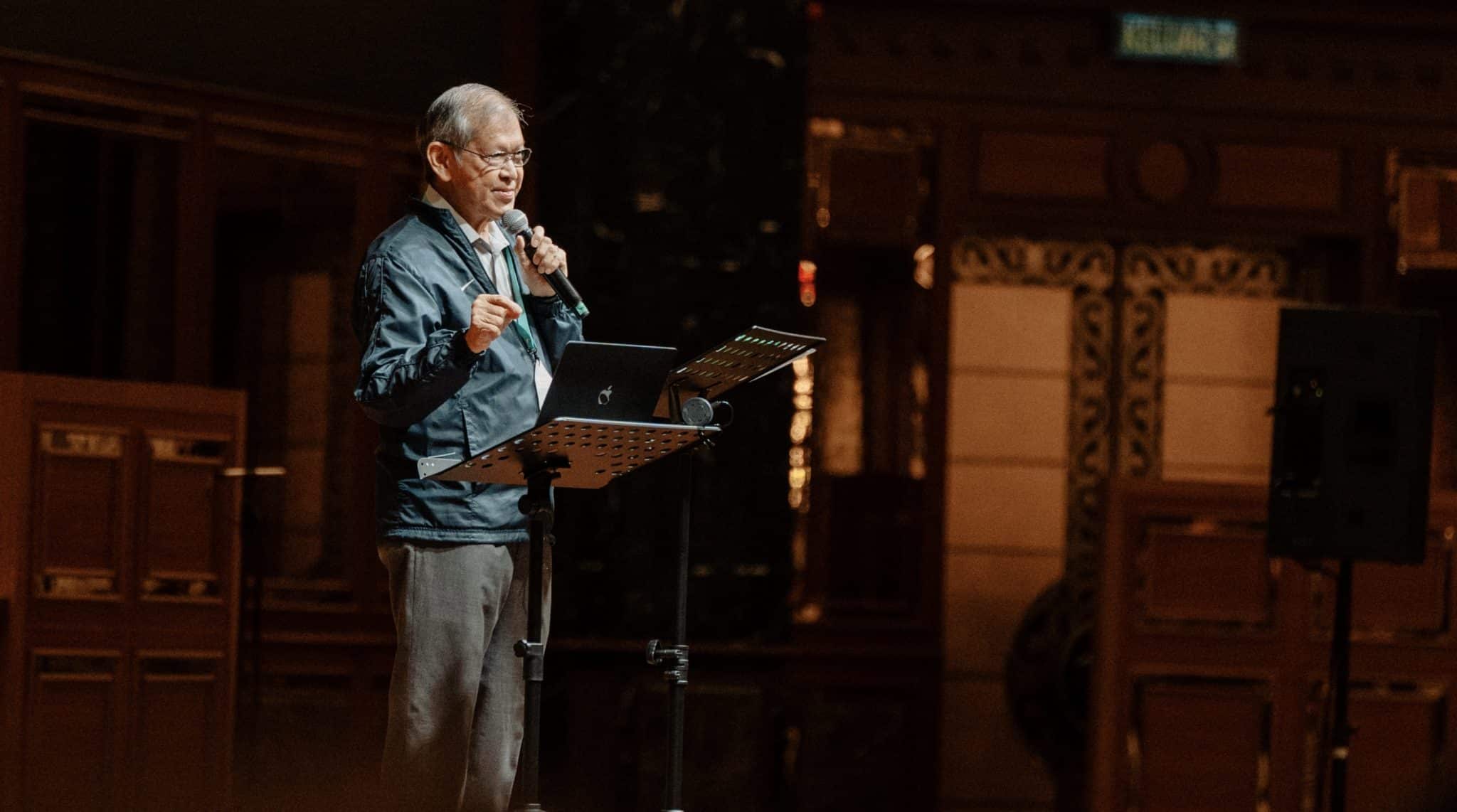
Photo by Alex Wigan on Unsplash
John Sung (1901-1944), was a contemporary of Watchman Nee and led some of the greatest revivals in China, Taiwan and Southeast Asia.
From 1935-1939, Dr Sung saw four revival campaigns in Singapore. His home and headquarters in Singapore was Chin Lien Bible seminary, which is still in existence today.
Dr Sung is described by Bishop Emeritus Dr Robert Solomon as “a passionate preacher who preached the Gospel with sharp clarity and spiritual power. He emphasised repentance, and the need to pull out sin, roots and all, from our hearts. He was a great holiness preacher, a rarer breed in our days”.
This was a letter Dr Sung wrote to the Nanyang evangelistic bands, his ministry partners in Singapore, on April 28, 1941:
I went through a rough patch the past five months. Looking back, I can see the compassion and grace of God. He led me to this hospital where everything seemed so cold and stiff. I felt as though I was shut up in a tomb, but it brought me closer to the Lord.
I learnt many precious lessons and compiled them in a series of messages entitled In the Footsteps of the Lord.
Peter said: “Christ suffered for you, leaving you an example that you should follow in His steps.” (1 Peter 2:21) Jesus came to the world and left behind the footsteps of suffering.
His disciples must take after Him, be willing to take up their own cross and follow Him in His footsteps.
1. The footsteps of poverty
The Lord was born into suffering, in swaddling clothes, in a humble manger and with no place to rest His head (Luke 2:7). He was born into the home of a carpenter, was not buffered by bank deposits and did not enjoy luxury. He had to live by the sweat of His brow. The Lord was the Son of God and yet was willing to suffer.
2. The footsteps of escape
Not long after Nativity, King Herod wanted to have Jesus killed. So Joseph and Mary left for Egypt to escape persecution (Matthew 2:13-14).
Jesus came to the world and left behind the footsteps of suffering.
3. The footsteps of hiding
The Son of the Highest God patiently waited for His call. He hid Himself in the form of a carpenter’s son for 30 years before He revealed Himself as the Son of God.
4. The footsteps of patient obedience
The Lord did not assume His parity with God. Instead, He emptied Himself and took on the form of man in all humility (Philippians 2:6-7). He toughened Himself in a carpenter’s home, and subjected Himself to temptations in the desert, in order that the plans of God might be fulfilled.
It was not until John the Baptist was thrown into prison that He came out to preach the Gospel.
5. The footsteps of the road less travelled
Generally, people love to be praised. They love to become pastors in big churches. But the Lord Jesus loved to go to villages to look for lost sheep and prodigal sons. Many people love to discuss Truth with prominent people. They want to lead such people to Christ.
The Lord Jesus, on the other hand, loved to preach to common sinners. He enlisted fishermen (Matthew 4:18-19), those with no educational or social status, to be His disciples.
The Lord would have no use for knowledgeable Saul if he had not been changed to humble Paul. If Moses were still prince in his palace and did not become a shepherd, the Lord might not have a place for him either.
6. The footsteps that no one knows
The Lord did not give advance notice as to where He would preach next. Tens of thousands followed Him and listened to His sermons wherever He went. He healed the sick and drove out evil spirits with a compassionate heart.
7. The footsteps of praying on the mountains
The Lord often made lonesome trips up the mountain to have spiritual communion with the Heavenly Father (Mark 6:46). He prayed on the mountains to avoid the multitudes who wanted to make Him King. He loved to have spiritual communication with God.
8. The footsteps of risking one’s life to save others
He went to the graveyard to save those who were possessed by the devil (Luke 8:27-39). In the wee hours of the morning, He saved His disciples from the anger of the roaring seas (Mark 4:37-39).
When the chief priest, the Herodians and the Pharisees were ready to pounce on Him, Jesus still preached to the multitudes.
9. The footsteps of being misunderstood
The Lord was often misunderstood.
Why must the Son of God die on the Cross? Why was He visiting Mary and Martha ever so often? Why did His disciples pluck ears of wheat on the Sabbath? Why did He spend the night at the house of rich man Zacchaeus? Why did He eat with the Pharisees?
Why did He allow the promiscuous lady to wash His feet with tears? Why did He reach Bethany two days late when Lazarus died? Why was He talking with a loose woman at the well?
10. The footsteps of being hated
The Lord preached in His hometown but He was hated by many people familiar to Him. They looked down on His background as the son of a carpenter (Mark 6:3), and refused to listen to Him.
11. The footsteps of drinking from the cup of bitterness
Everyone wants to drink from the cup of sweetness and not the cup of bitterness. The Lord willingly drank from the cup of bitterness at Gethsemane (Matthew 26:36-49).
God treated His own Son with justice and the world with love.
12. The footsteps of being abandoned
Even His own brothers did not believe in Him. After spending many years building up His disciples, they abandoned Him the night He was arrested (Matthew 26:56).
Only God was there to give Him strength.
13. The footsteps of doing God’s will
The Lord Jesus took comfort in the promises of Scriptures. He was willing to be sold, chained, whipped and even put to death on the Cross so that prophecies might be fulfilled and the will of God be done (Matthew 26:28).
14. The footsteps of being wronged
He was put on trial by the Sanhedrin, and many people made false accusations. Jesus did not counter these accusations with debate. He remained silent to the end (John 19:9-10) so that He might be revealed as a lamb to the slaughter.
15. The footsteps of Golgotha
The steps to Golgotha are the final and most bitter of them all. The Lord trudged painfully with each step towards Golgotha and when He hung on the Cross, He took the sins of the world upon Himself. God treated His own Son with justice and the world with love (John 3:16-17).
As we trace His footsteps, we become patient in our suffering.
I thank God that the Lord has given us many footsteps to follow. As we trace His footsteps, we become patient in our suffering.
Let us follow Him, trust Him for victory and leave His fragrance behind for everyone!
Dear brothers and sisters, Christians of the last days! Unless we follow His footsteps with great resolve, we will certainly be doomed for failure! I have many things to say, but it is now time for dinner. May the Lord, our Saviour be with you till the end of time.
Blessed Emmanuel, John Sung
Servant of God
28 April 1941
This letter by John Sung is republished with permission. It was first printed in The Diary of John Sung: Extracts from his journals and notes by Armour Publishing.
Reflection and Discussion
- Which of the 15 footsteps stood out to you? Why?
- In the midst of smooth-sailing and uneventful days, which footstep must you watch out for?
- In the midst of storms and suffering, which footsteps of our Lord would bring the most comfort?
We are an independent, non-profit organisation that relies on the generosity of our readers, such as yourself, to continue serving the kingdom. Every dollar donated goes directly back into our editorial coverage.
Would you consider partnering with us in our kingdom work by supporting us financially, either as a one-off donation, or a recurring pledge?
Support Salt&Light


